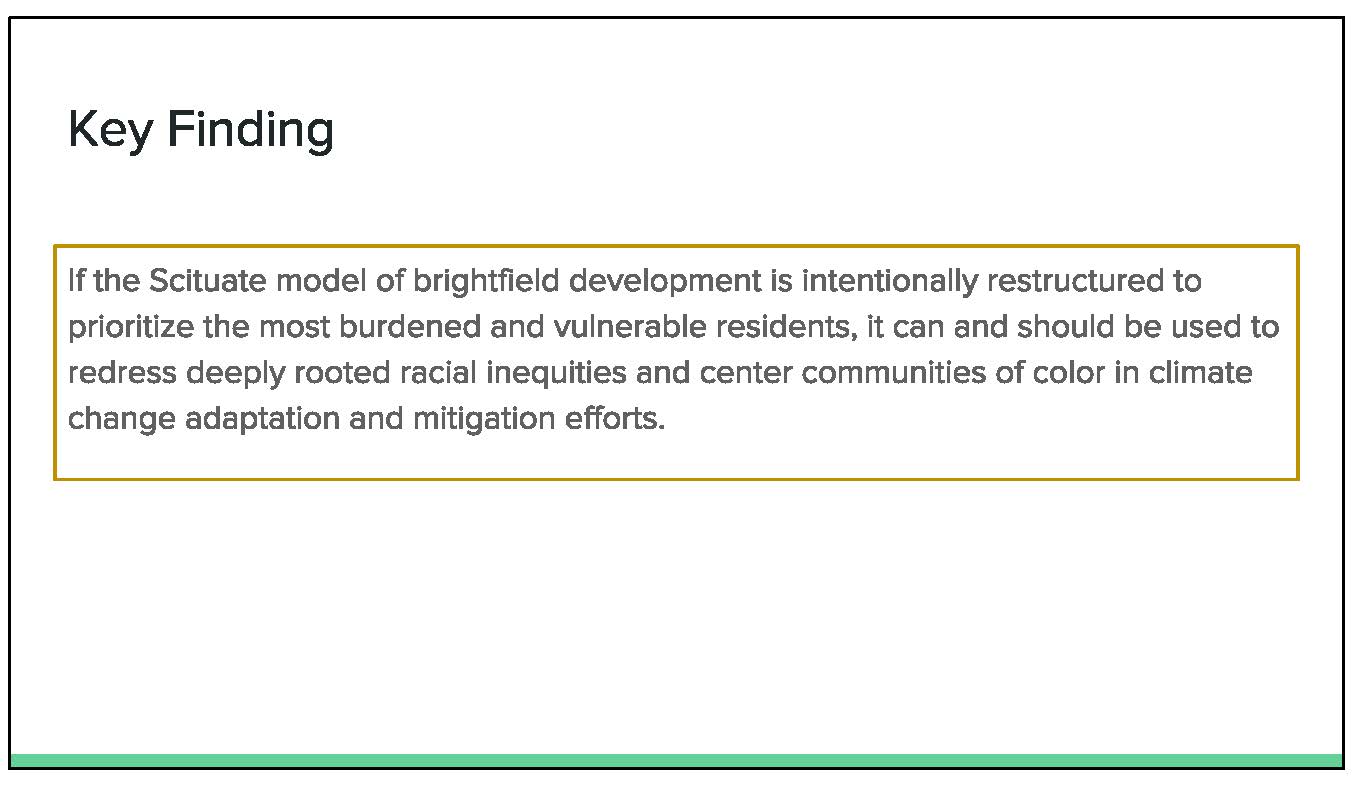Planning for Racial Equity in Brightfield Development: Lessons from Scituate, MA
I spent the fall semester of my Senior year researching a case study of solar-on-landfill or “brightfield” solar development.
I analyzed the social, environmental, and economic dimensions of one Massachusetts town’s model of brightfield development and proposed ways to adjust the model to prioritize racial equity.
These slides give a brief overview of what I found.


Geography is often considered the science of “Where” and Why” This entails asking the question, “Why here and not elsewhere?” “What factors converged to result in a certain development taking place in one location, or in one set of communities, and not another?”
These questions are foundational to my research project this semester. However, through my research I also aimed to extend these questions, asking not only “where?” and “why?”, but also…
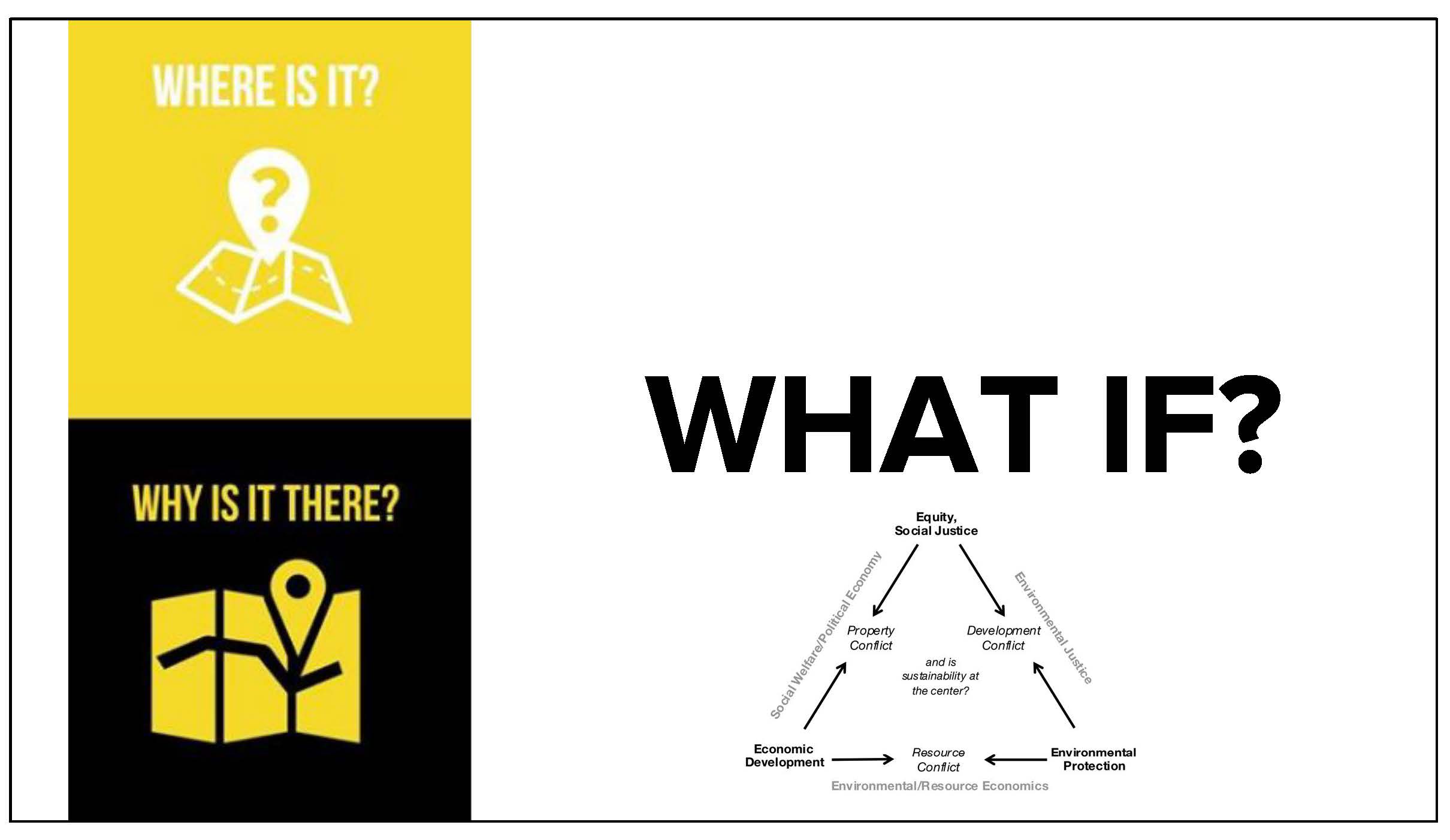
“What if?”
“What would be possible if this development were located here AND elsewhere, or maybe even elsewhere INSTEAD OF here?”
What if those who have suffered the greatest environmental burdens, and who are most vulnerable to climate change impacts were recognized and prioritized in planning efforts?
What if we could find strategic alliances among the three aspects of sustainability– economic, environmental, and social– that are often seen as inherently in conflict?
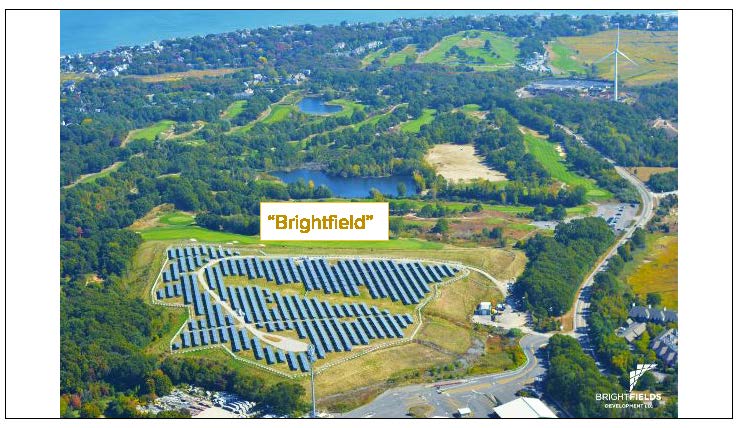
My research this semester focused on examining how solar array development on capped landfills could contribute to answering these questions.
Specifically, I looked at the town of Scituate, Massachusetts, and the brightfield, or solar array on closed landfill development, that they created there.
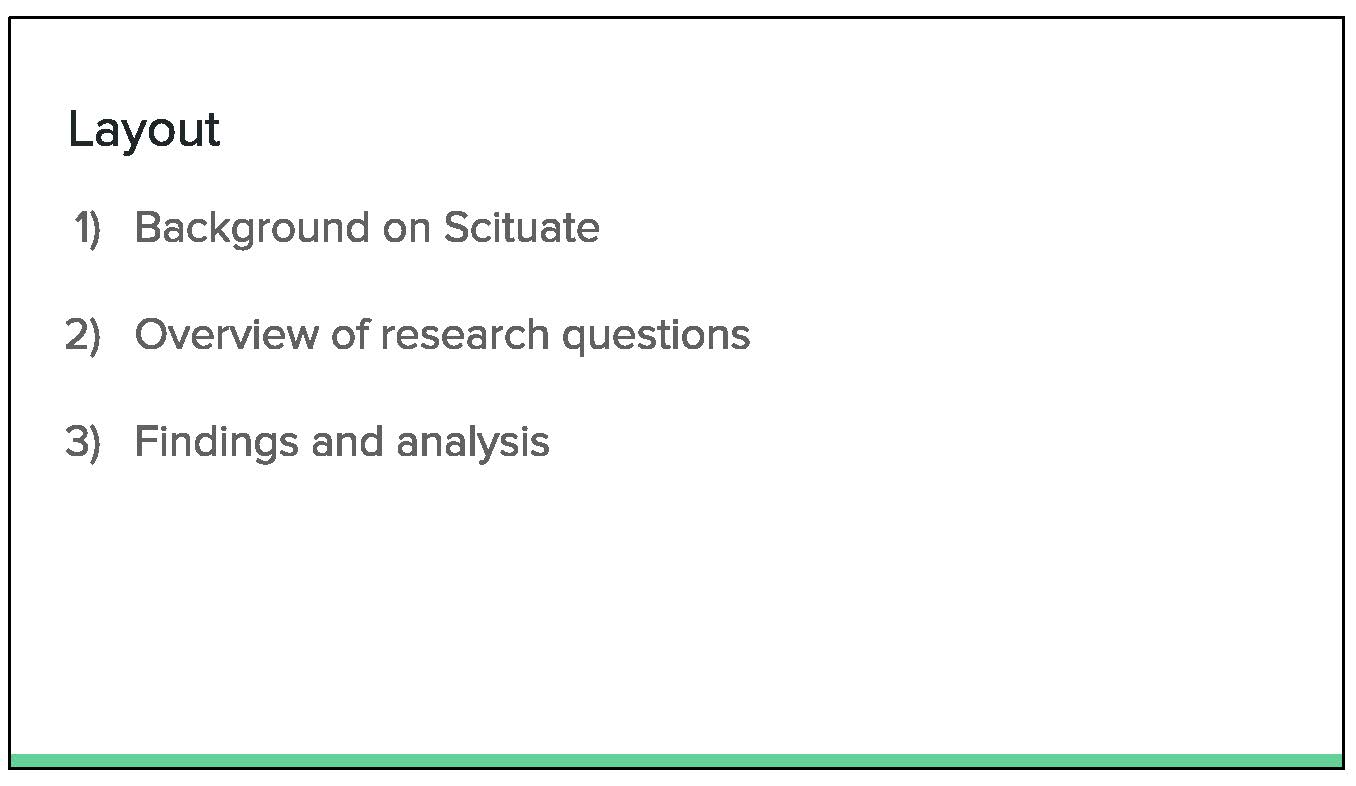
In this presentation first I’ll give a bit of background on the town of Scituate, outline the guiding questions for my inquiry, and present my findings.
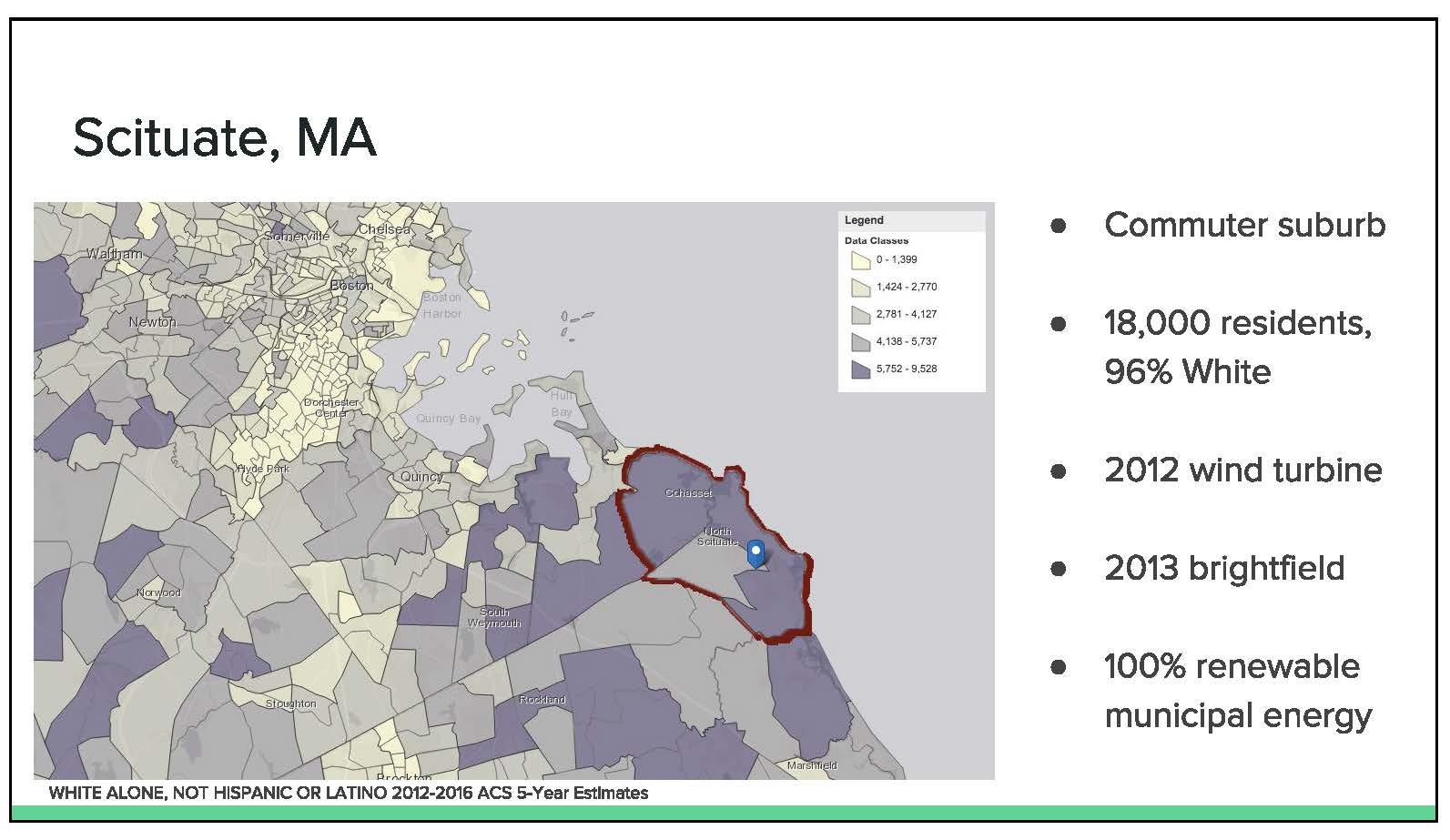
Scituate is a commuter suburb of Boston
The town is home to roughly 18,000 people and is 96% white.
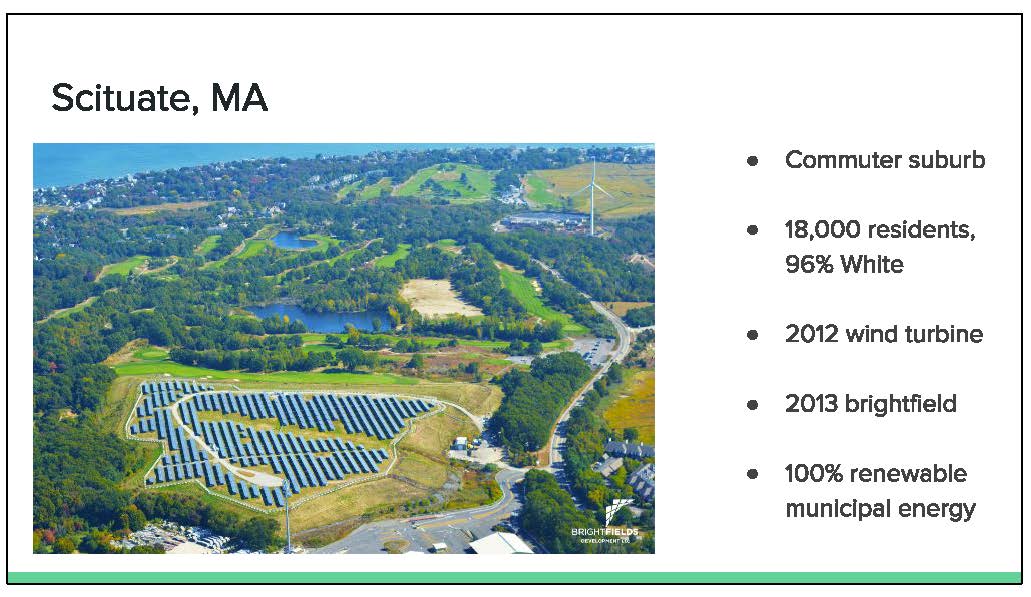
In 2012, Scituate installed 1.5 megawatt wind turbine, and in 2013 a solar array was installed on a capped landfill in the town. With the energy generated by the turbine combined with the energy generated by the solar array, Scituate became the first town in the state to have 100% of their municipal facilities and operations running completely on renewable energy.
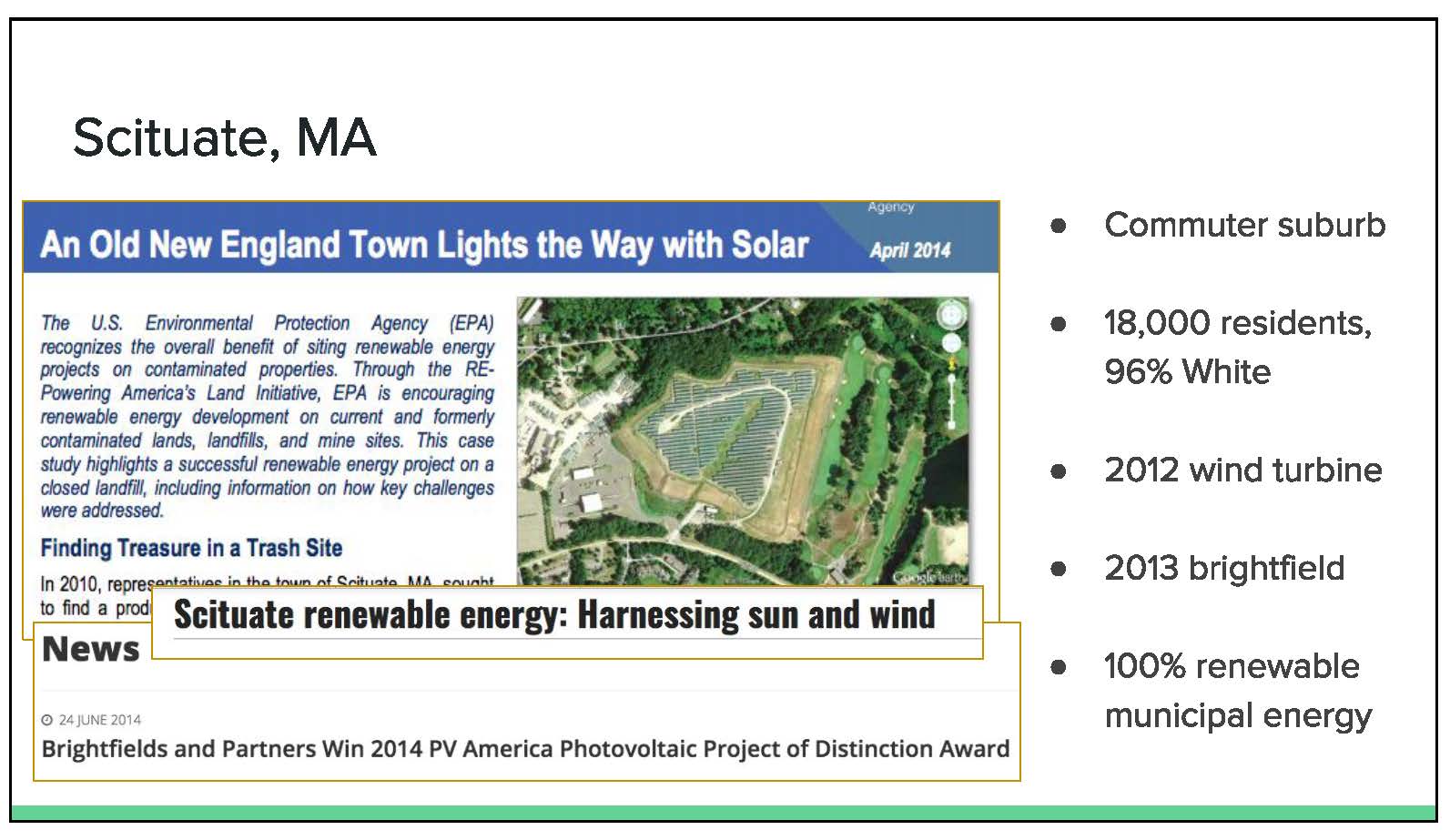
The town has received a lot of positive press for this. In the sources I came across, Scituate is regarded as an all-around success story and a win-win deal for everyone involved.
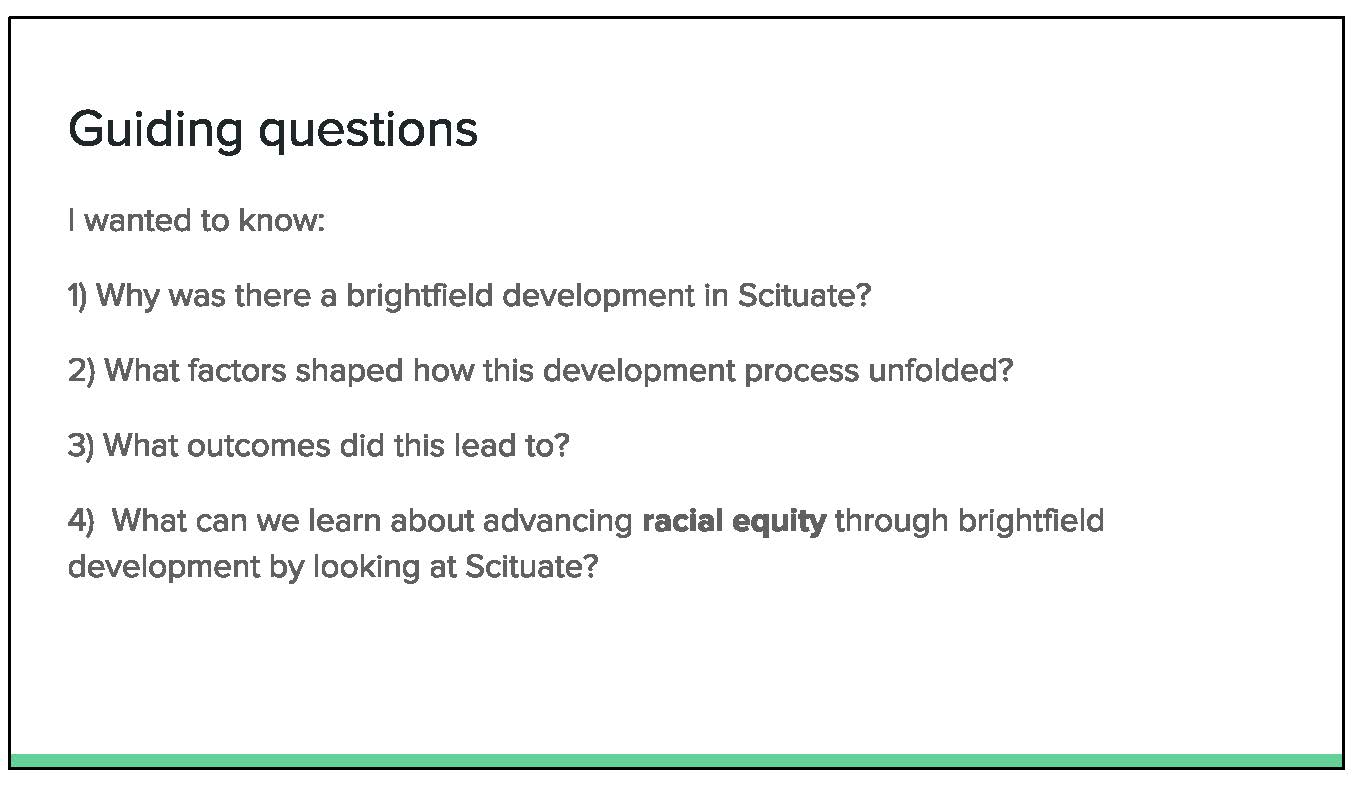
My research on this town was centered on four guiding questions.
First, why was there a brightfield development in Scituate? What factors converged to lead to a brightfield being developed in this specific place?
Given the legacy of specifically race-based injustice when it comes to exposure to environmental burdens and access to environmental amenities, I felt it was important to explicitly name race and advocate for racial equity when considering brightfield development.
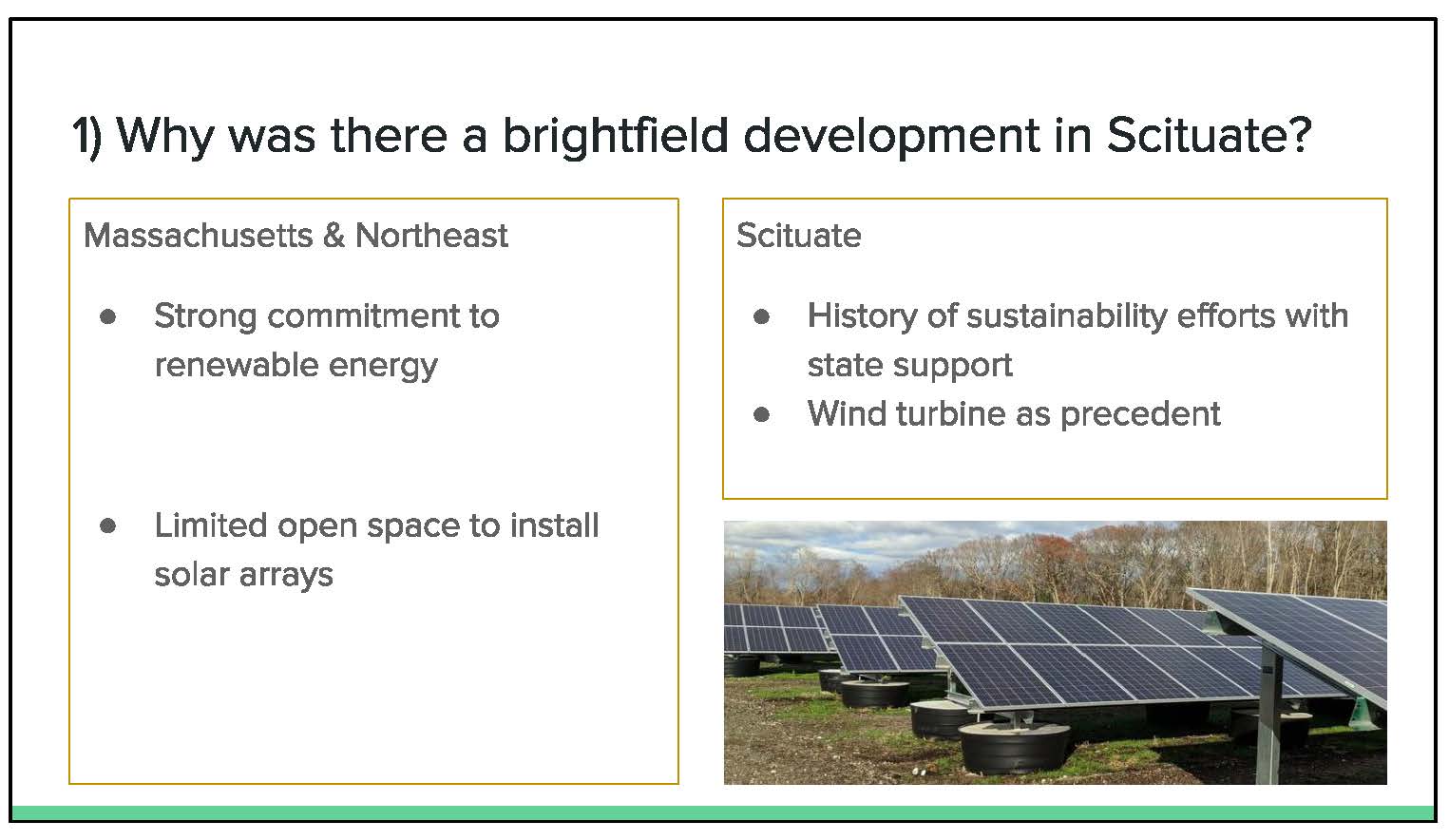
The answer to this question is found at multiple scales.
Scituate was not the first town in Massachusetts to have the idea of mounting a solar array on a capped landfill. In MA, and the Northeast in general, commitment to renewable energy has been strong for many years, while open space is relatively limited. As such, towns in this area have had to be creative in solar siting, and brightfields are one way to do this, given that closed landfills are essentially open spaces that can’t support most other uses.
In the years leading up to their brightfield development, Scituate had undertaken several other sustainability efforts in partnership with the state. After installing their wind turbine in 2012 and seeing the benefits it produced, the town was eager to continue generating more savings and reducing their environmental impact with a solar array.
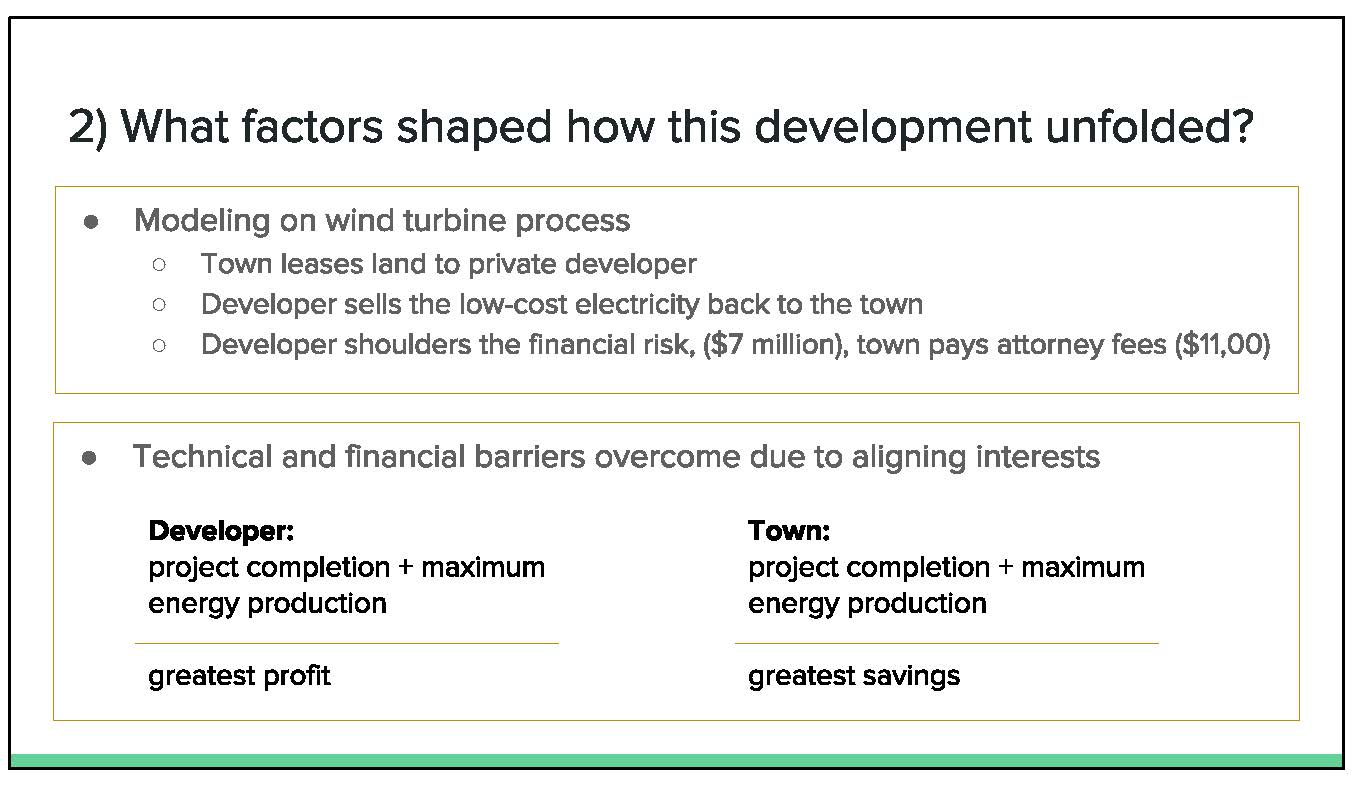
Scituate’s brightfield development process was modeled closely on their process for installing their wind turbine the year prior. The town leased the land that the solar array would be on to a private developer, who was responsible for carrying out the engineering, construction, and operation of the solar array, and selling the electricity produced back to the town at a rate lower than traditional electricity. With this model the town only paid around $11,000 of its own money, which was used to hire an attorney to negotiate contracts. The actual cost of the solar array, around 7 million dollars in all, was paid by the private developer, which placed the financial risk on the side of the developer, rather than on the town.
During the development process there were a couple of serious technical issues and funding issues that came up, but these were overcome in a timely manner and the project was completed not far behind schedule because both parties involved had a strong stake in seeing the project through. For the developer, this motivation was profit, while for the town, it was cost savings along with a sense of pride and fulfillment of their environmental goals.
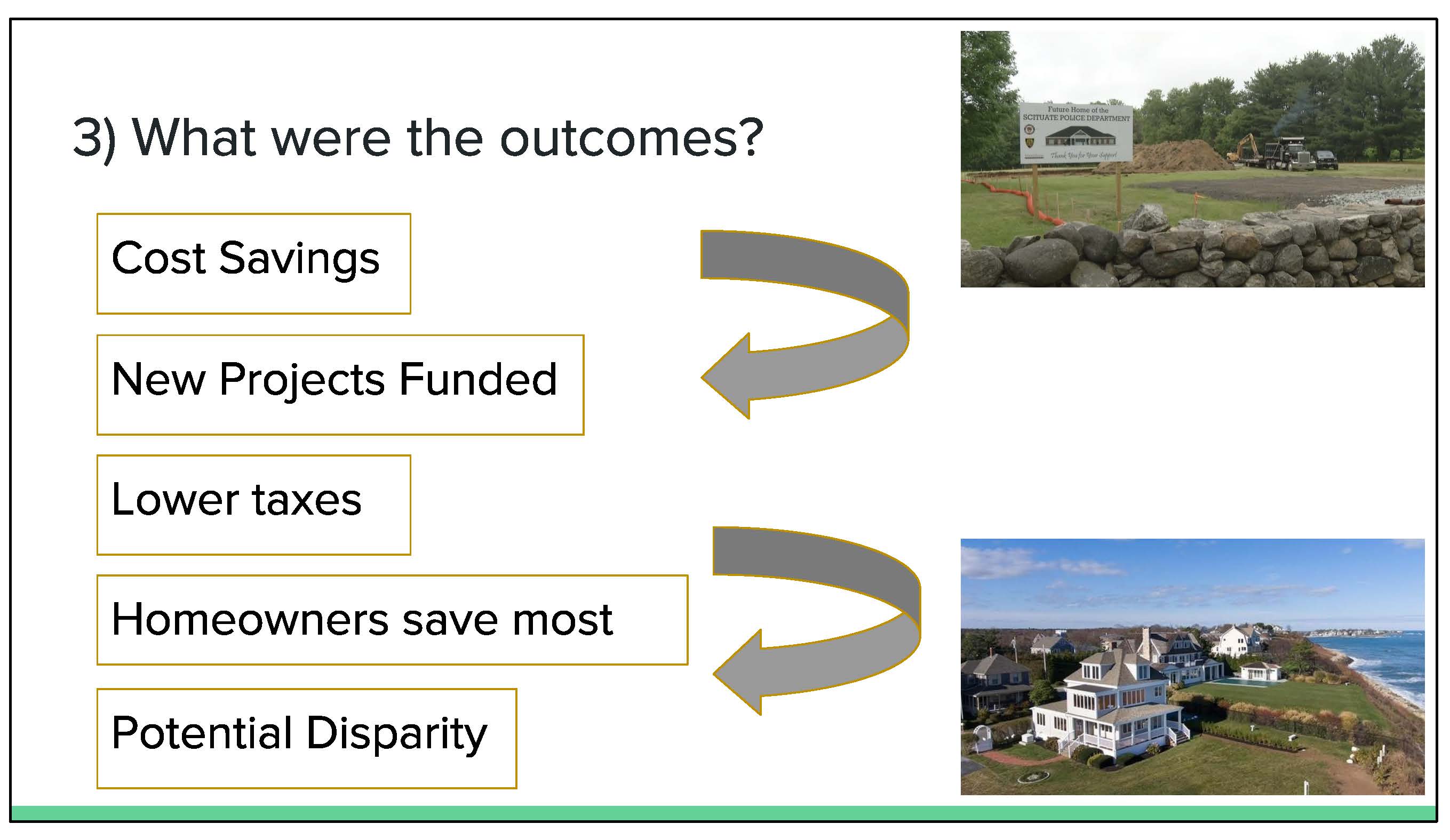
So, what were the outcomes of this process?
Possibly the most notable outcome of the brightfield development was that a formerly unproductive site now produces economic benefits in the form of cost savings for the town. As of mid 2018, Scituate was netting roughly $350,000 per year from money saved by sourcing from renewable energy instead of traditional electricity.
With the money the town has saved by sourcing from renewable energy, the town has been able to fund several new projects, including the renovation of a middle school and construction of a police station, without raising taxes on Scituate residents. So, the brightfield has essentially resulted in lower taxes overall for Scituate residents.
However, not all residents of Scituate stand to benefit equally from this outcome.
With a lower tax rate, residents who make up a larger share of the town’s tax base stand to save more total money over time than residents that make up a smaller share of the town’s tax base. So, homeowners for example, who pay large property taxes, stand to save more total money over time than renters, who would see lower total savings over time.
A person I interviewed who worked on this brightfield development noted that once landlords property tax rates are reduced, they may lower the rent for their tenants, and in doing so, transfer more financial benefits to their renters. However, whether this specific outcome for renters actually occurs is definitely not guaranteed.
This is where a potential disparity emerges between homeowners and renters resulting from the brightfield development
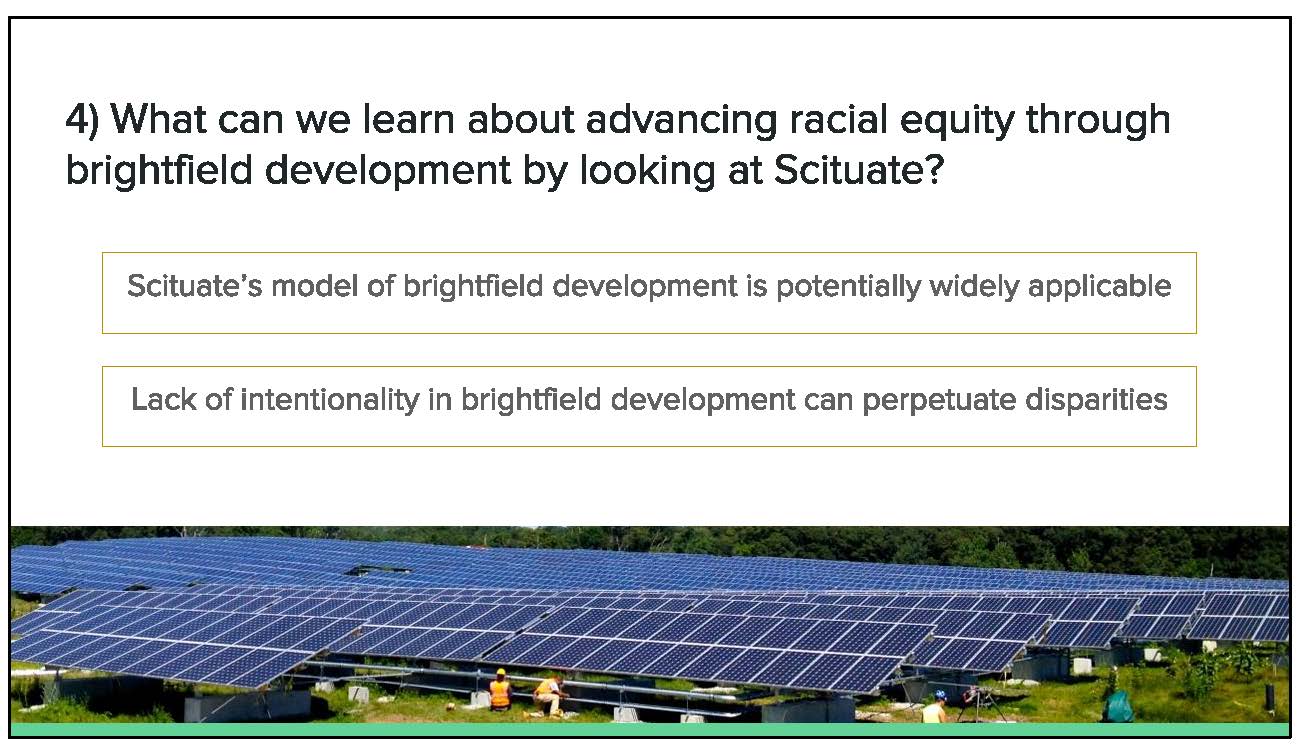
First, we learn that the model of brightfield development used in Scituate can actually be very financially feasible, and could be applicable to a wide variety of communities
However, we also learn that creating a brightfield development without intentionally planning to ensure equitable outcomes can perpetuate existing disparities.
In this case, the homeowner/renter disparity has widespread implications for racial equity in Massachusetts, where the homeownership rate for households of color is 31 percent versus 69 percent for White households.
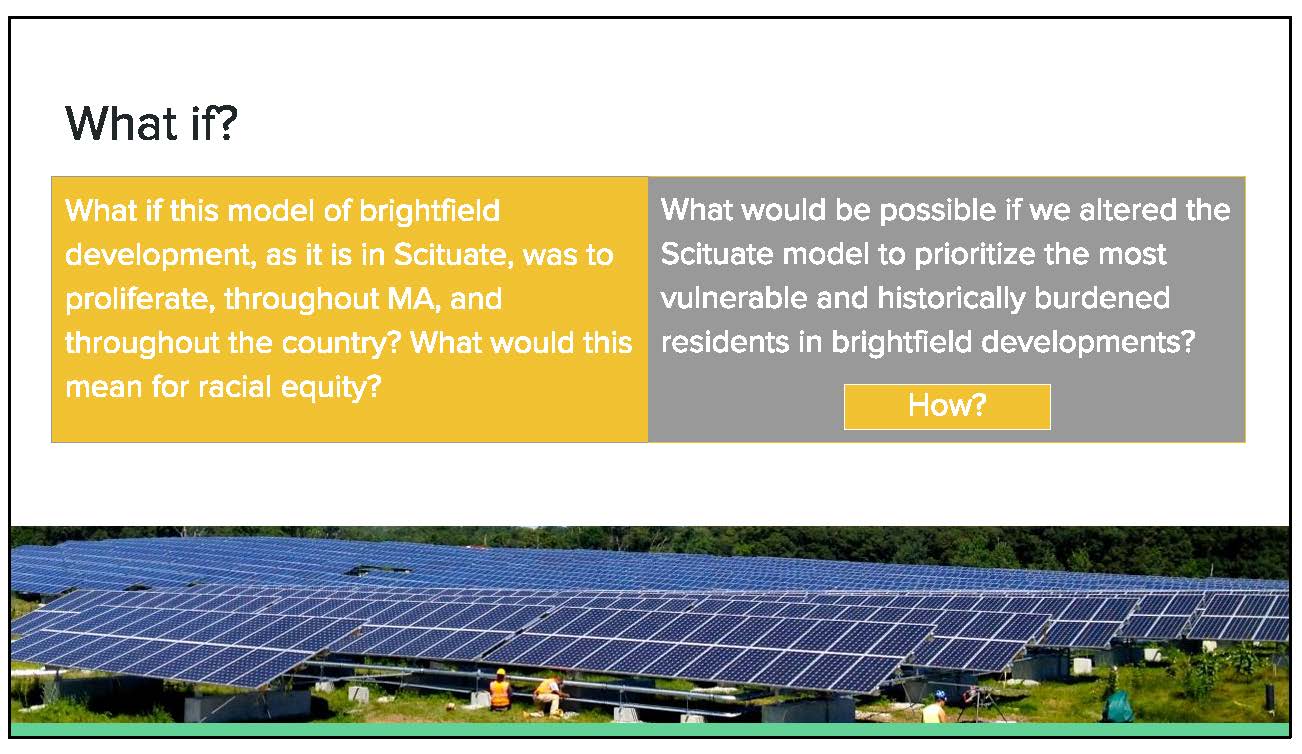
Considering this disparity, it is important to return to the question “What if?
What if this model of brightfield development, as it is in Scituate, were to proliferate, throughout Massachusetts, and throughout the country? What would this mean for racial equity going forward?
On the flipside, What would be possible if we altered the Scituate model to prioritize the most vulnerable and historically burdened residents in brightfield developments?
This could involve relatively simple steps, such as allocating cost savings generated by the brightfield to fund energy efficiency retrofits for the most energy-burdened households, which tend to be households of color. But this is just one of many examples of how a greater focus on equity could be worked into Scituate’s model.
